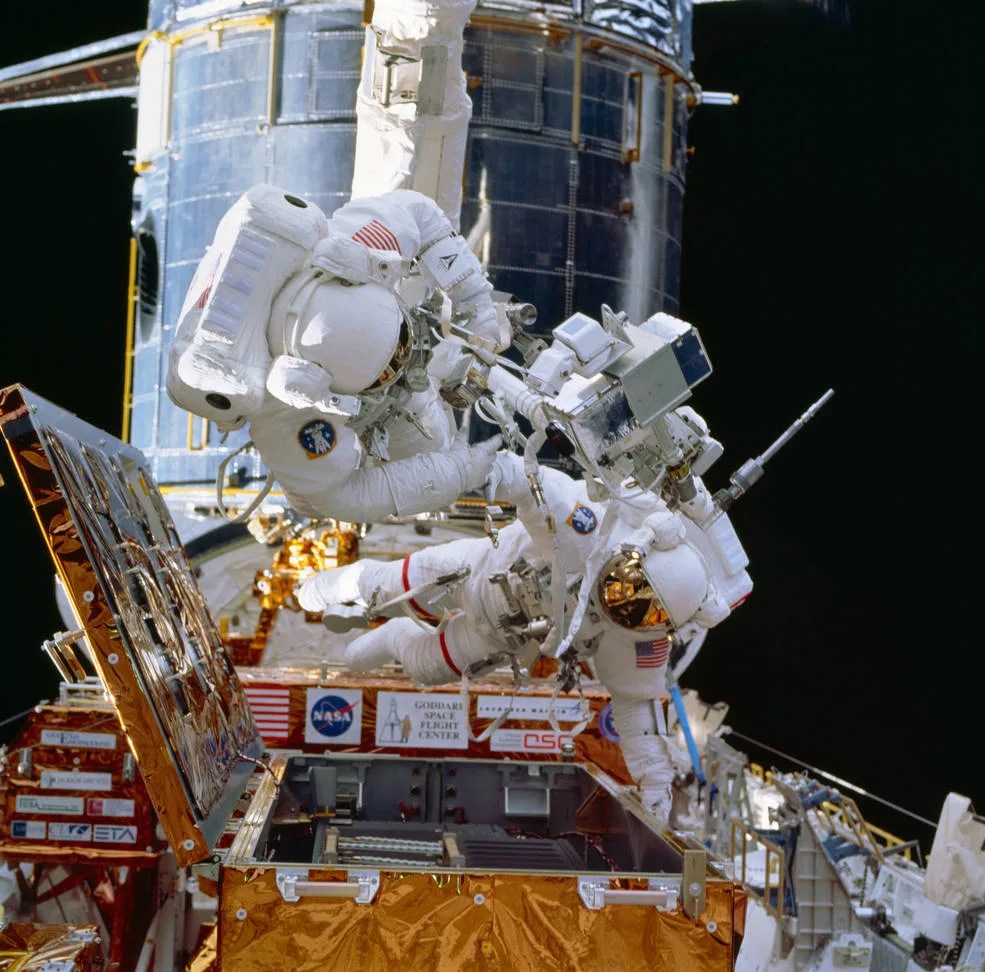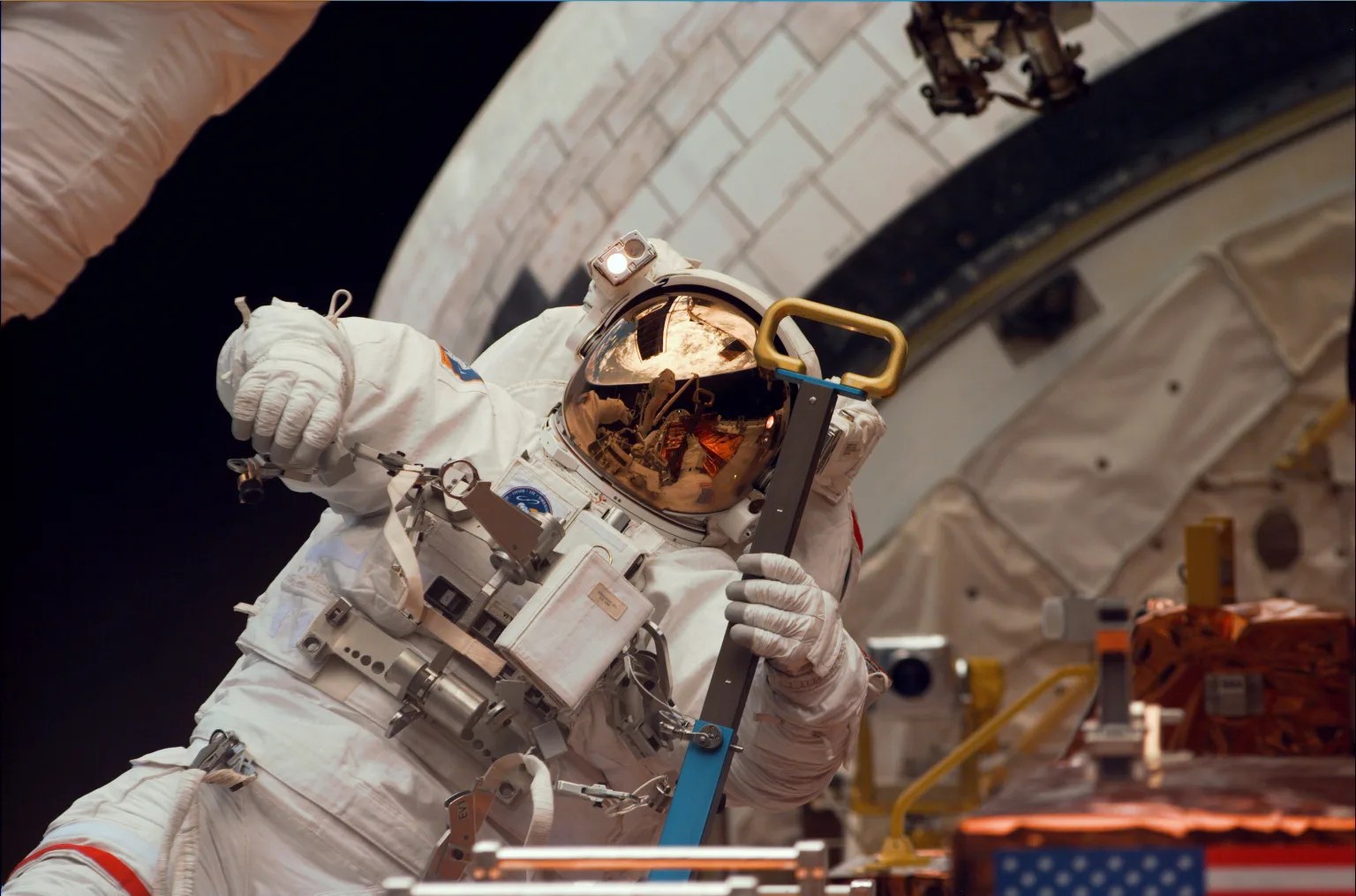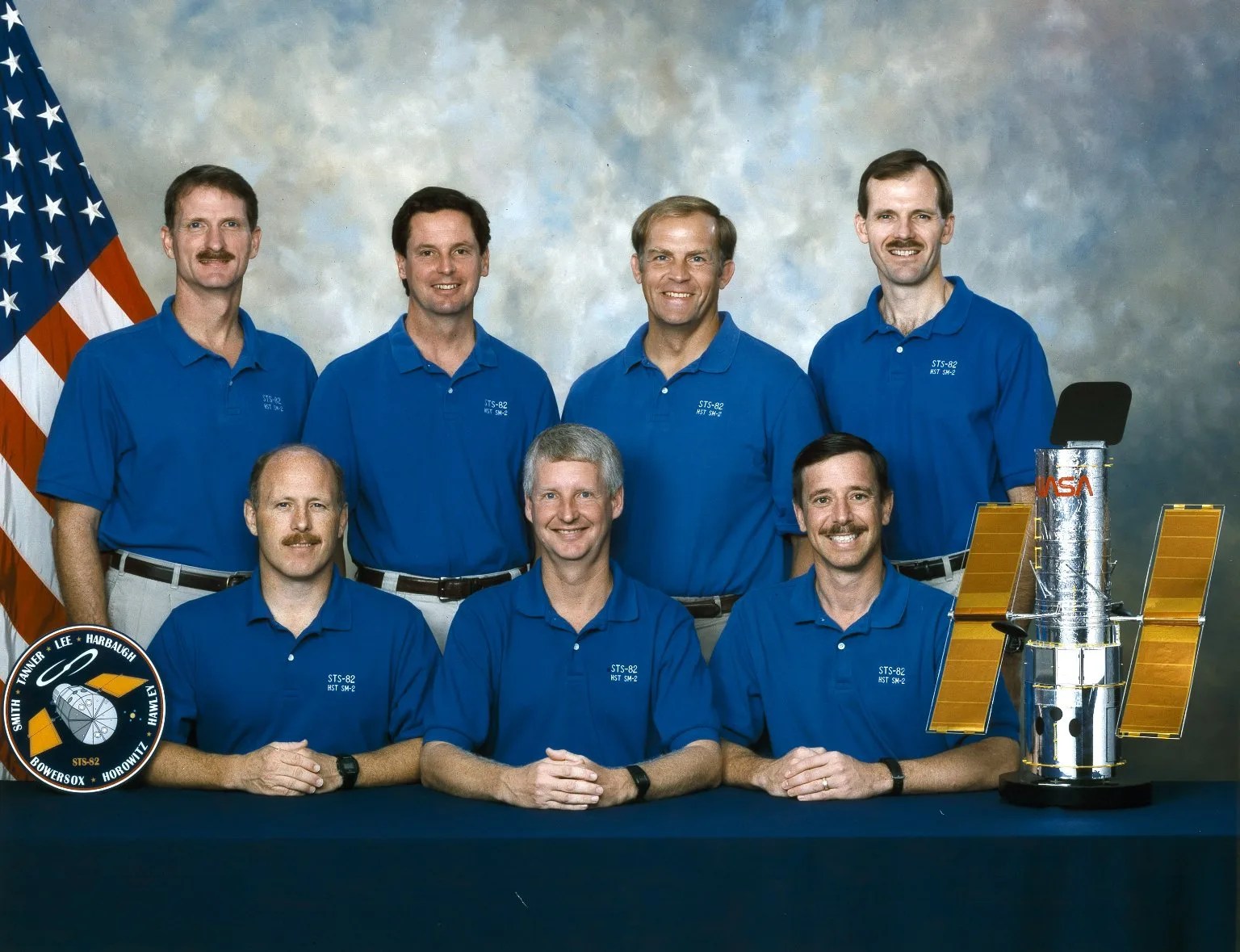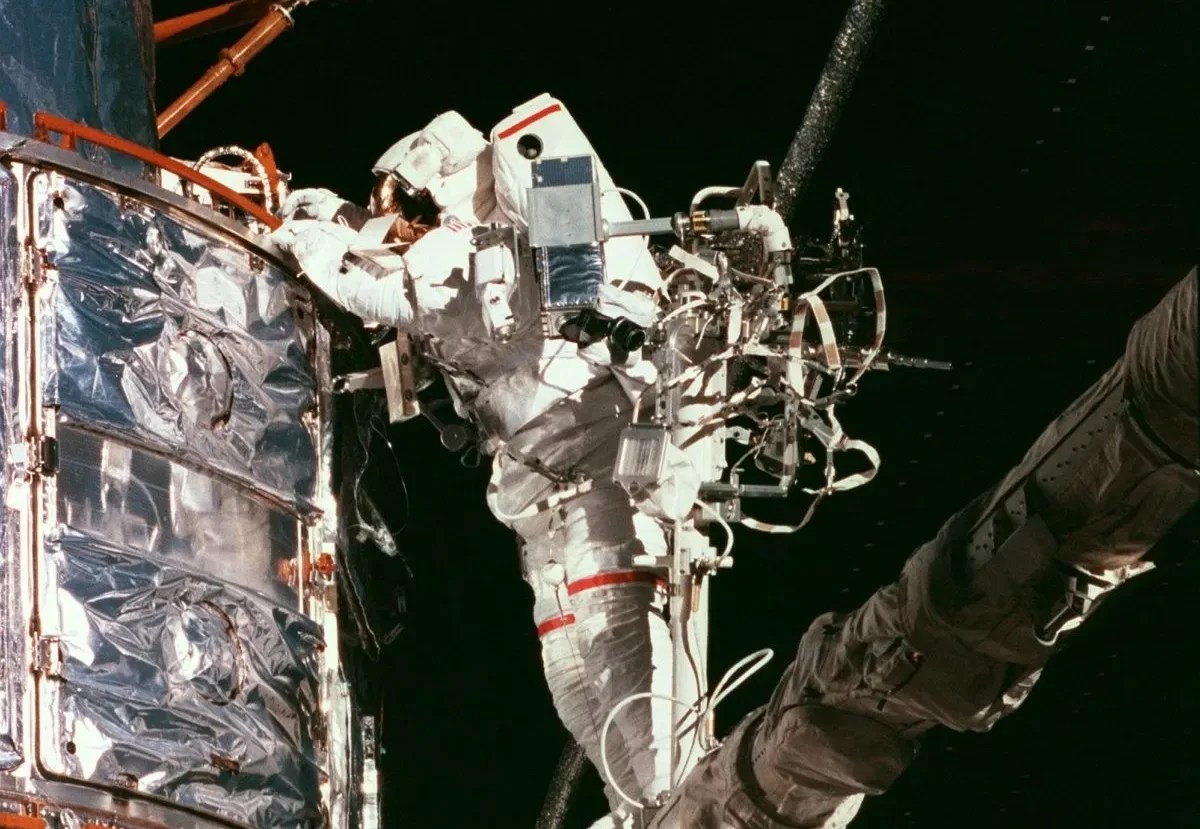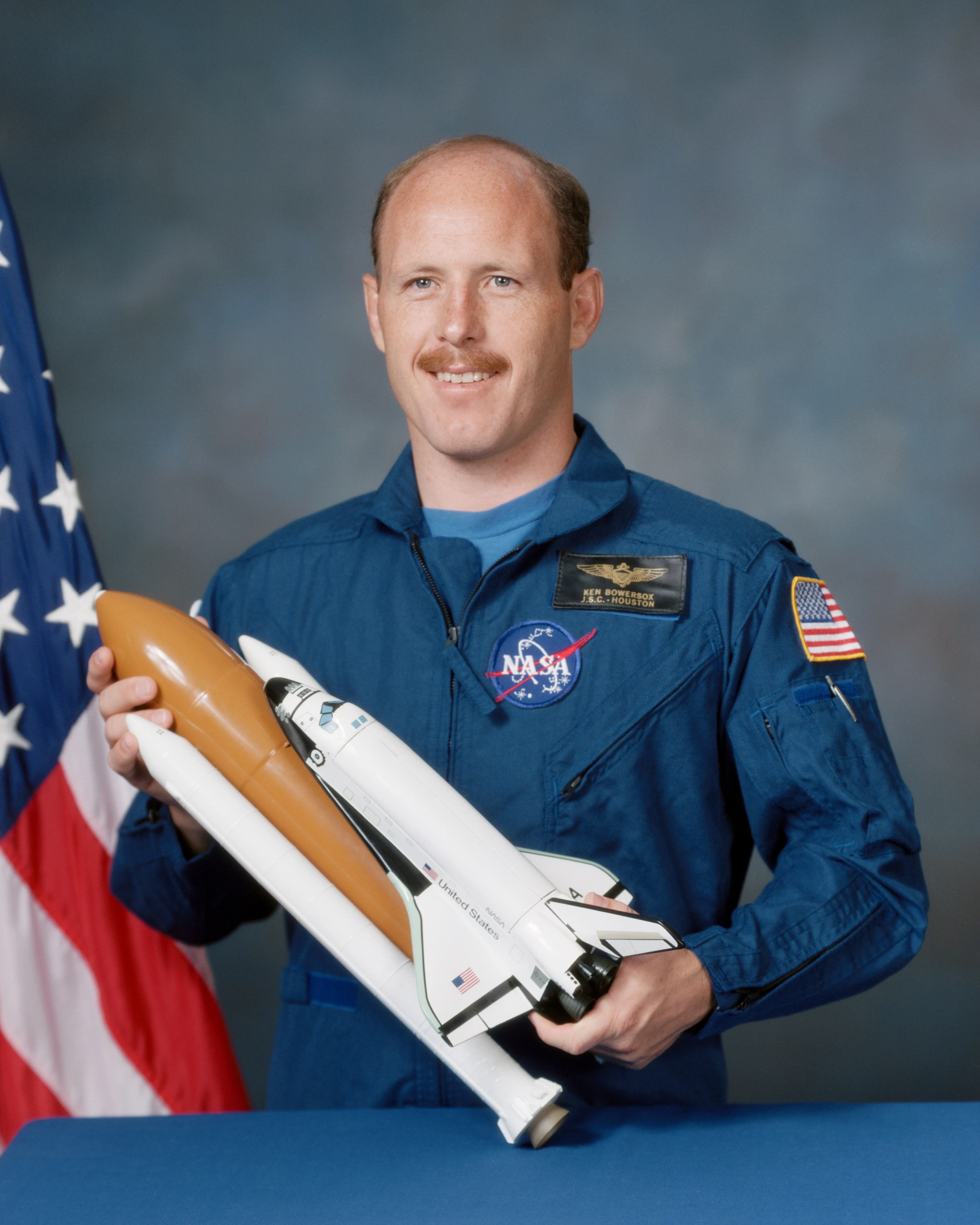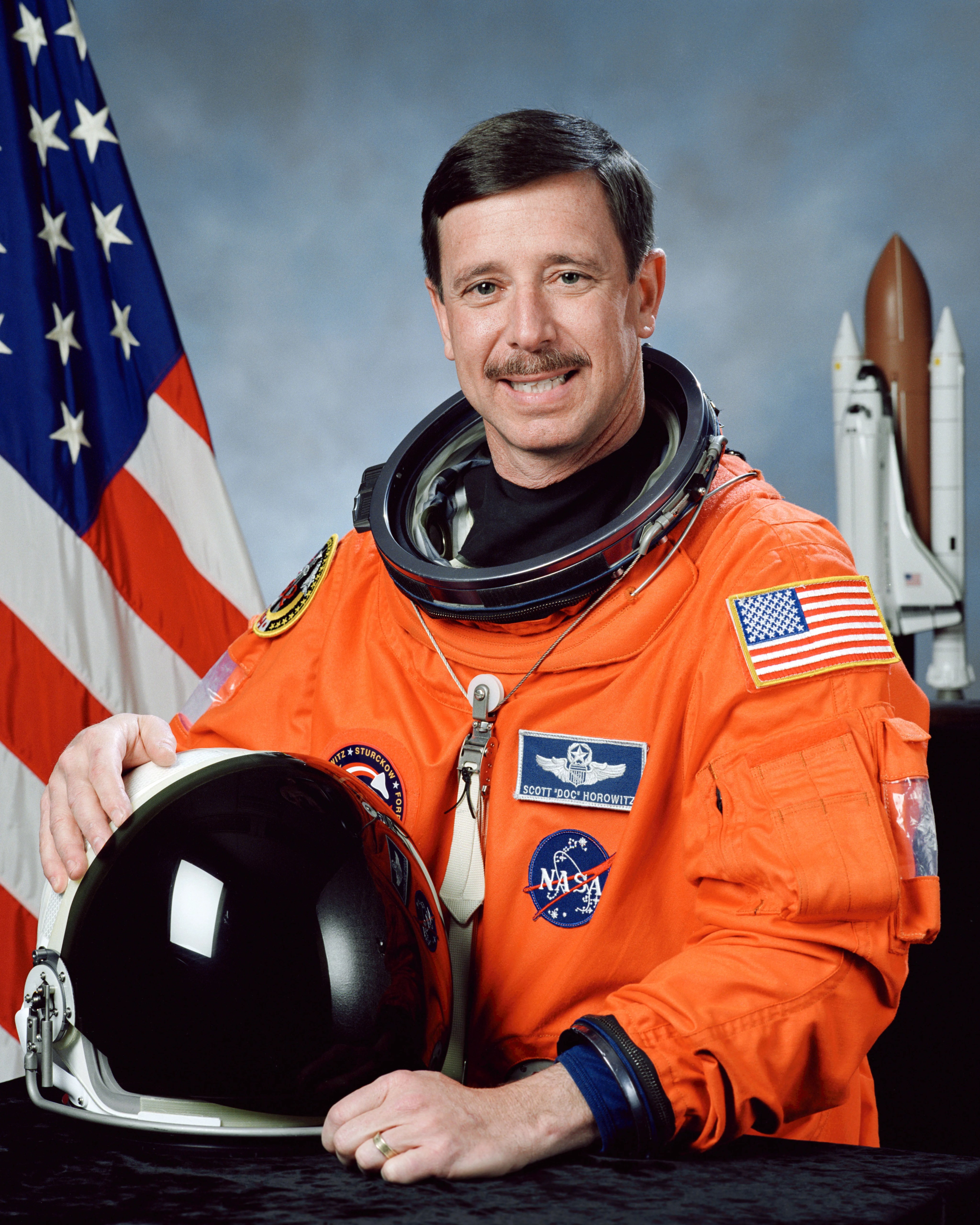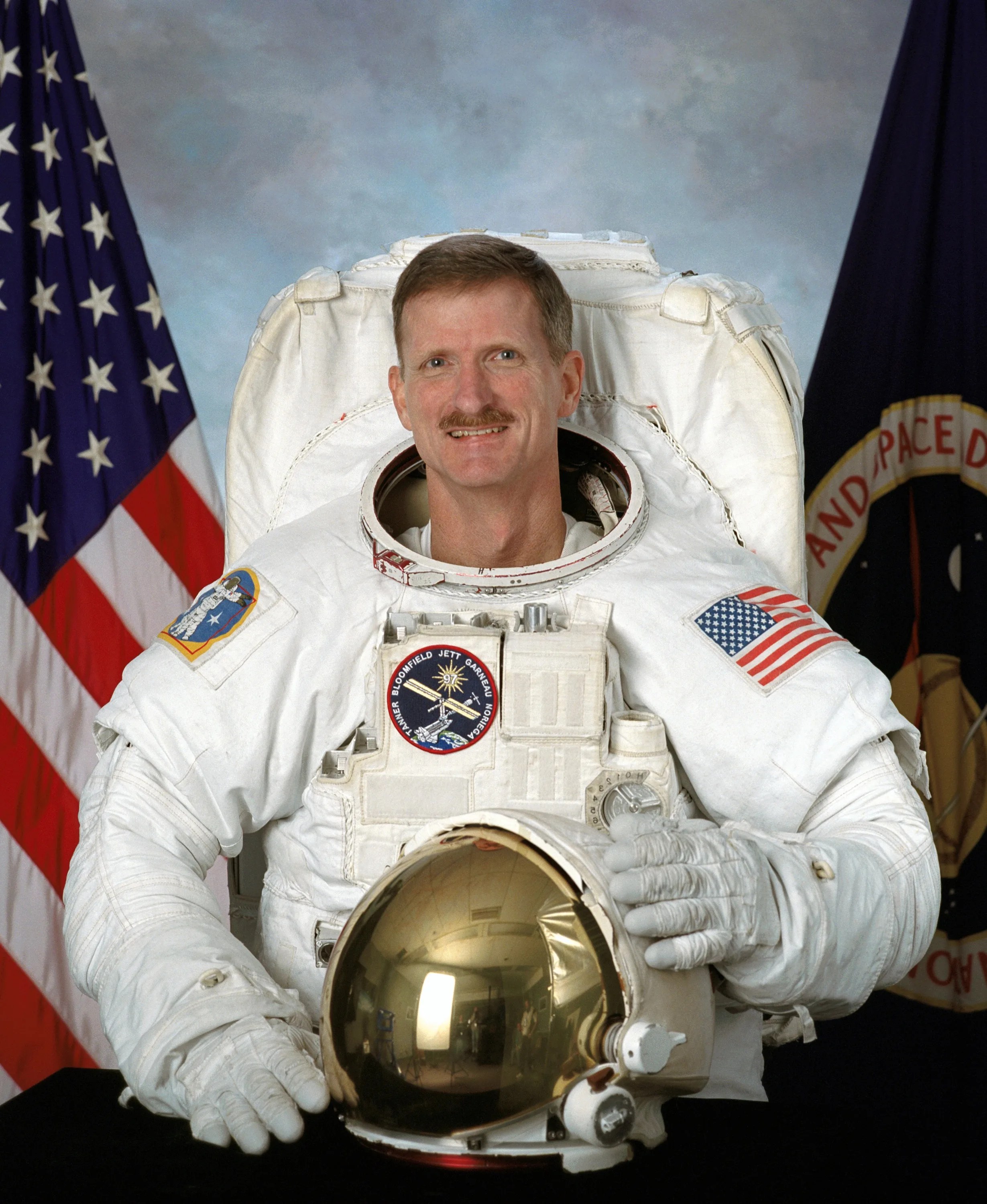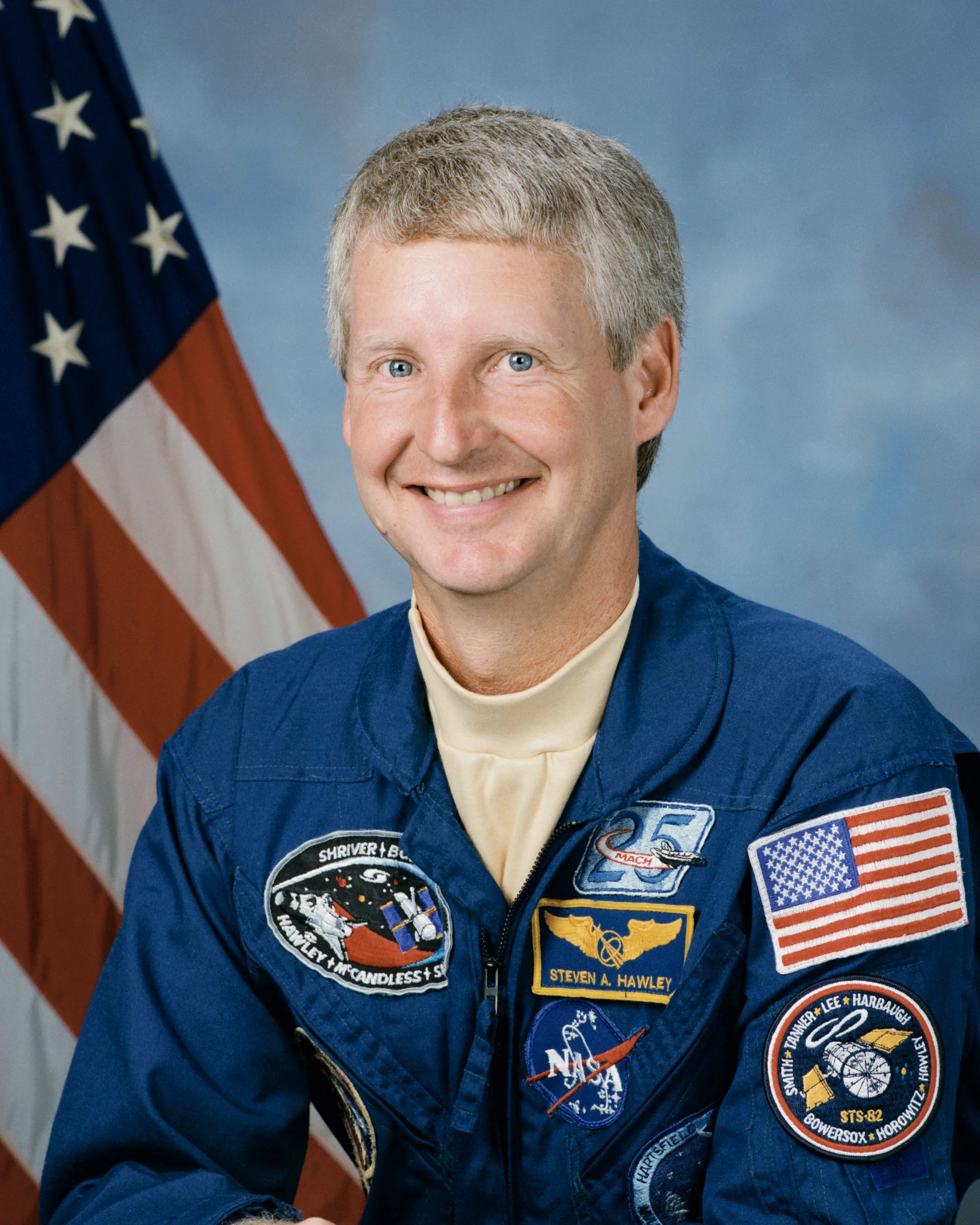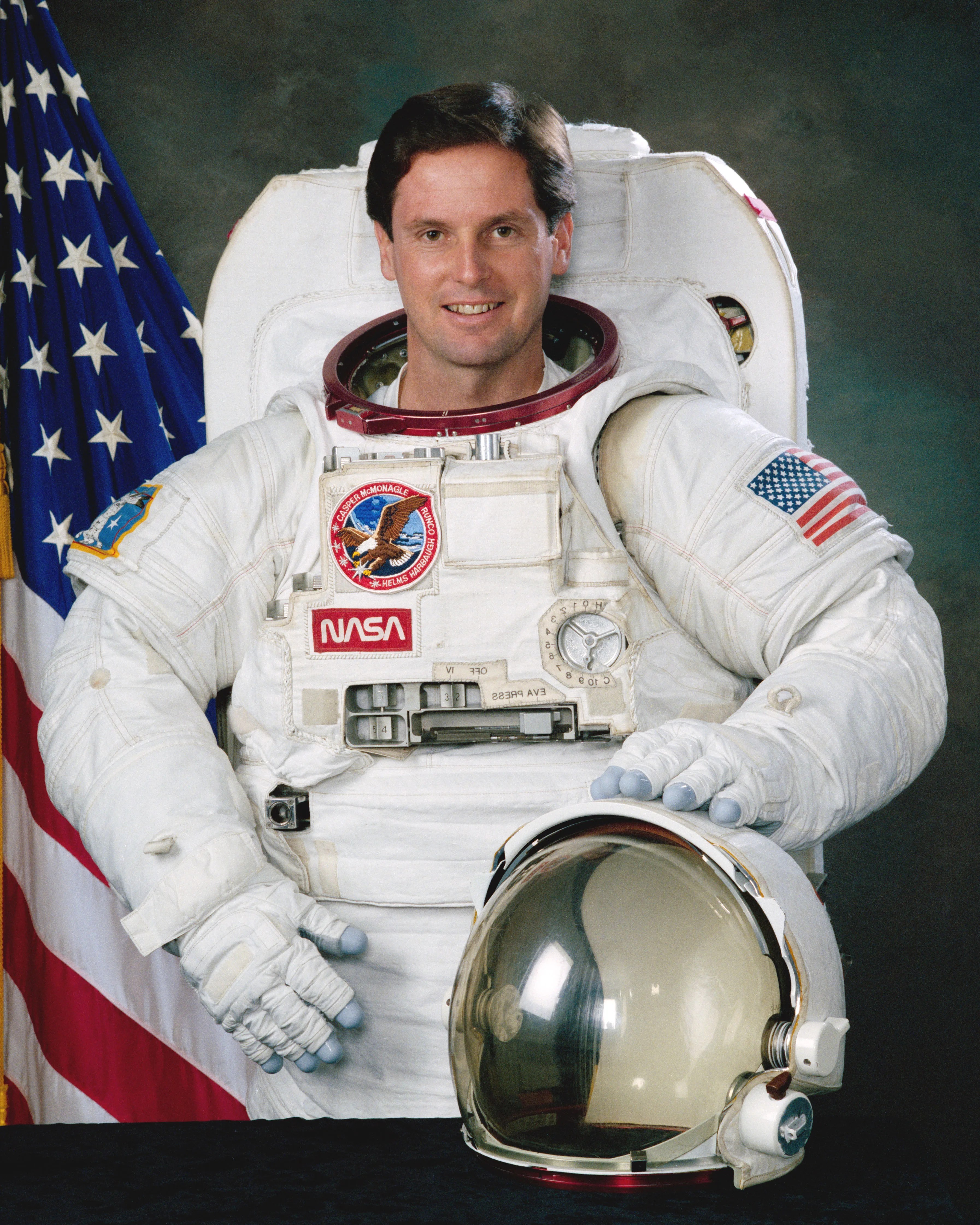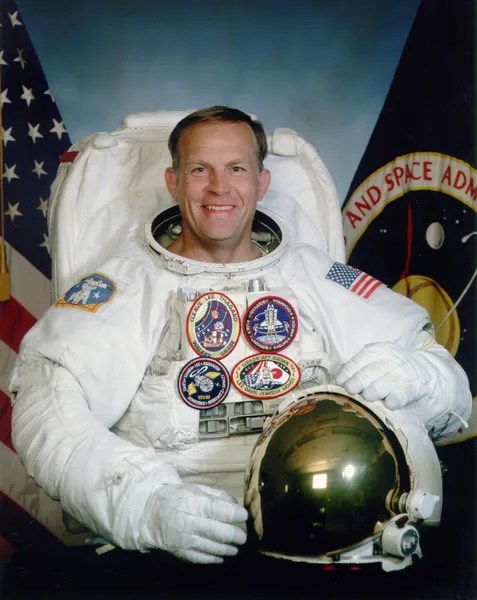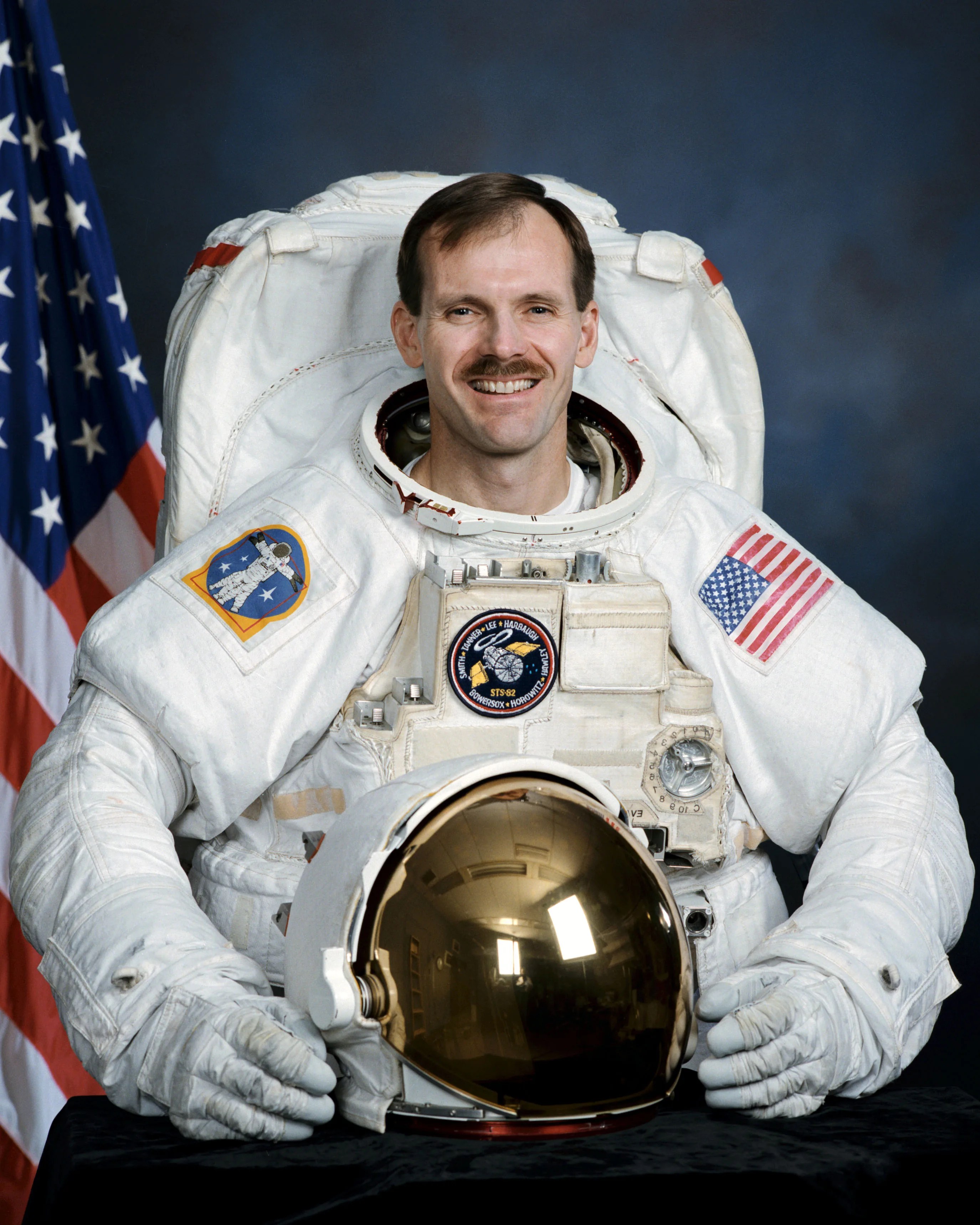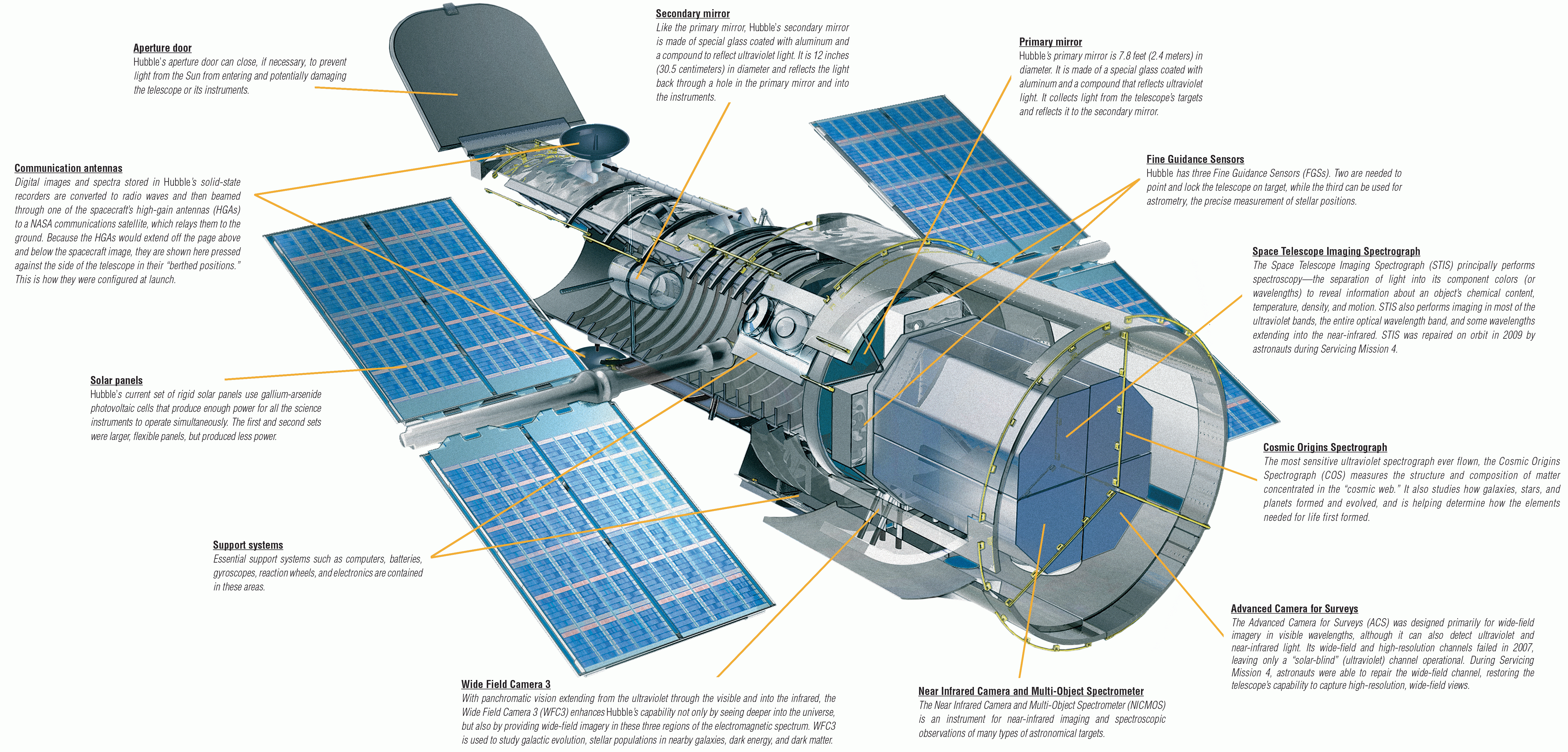Servicing Mission 2
(SM2)
The mission extended the range of wavelengths Hubble can see and increased its efficiency and performance.
mission type
Servicing Mission
shuttle mission
STS-82
Launch
Feb 11, 1997
duration
9 days
Hubble’s second servicing mission greatly improved the telescope’s productivity, with the installation of new instruments that extended Hubble's wavelength range into the near infrared for imaging and spectroscopy, allowing us to probe the most distant reaches of the universe. The replacement of failed or degraded spacecraft components increased efficiency and performance.
Three categories of elements made up the mission payload:
- Science instruments to enhance science productivity
- Primary spacecraft maintenance items
- Secondary spacecraft maintenance items
Quick Facts
- Number of Orbits: 150
- Miles traveled: 4.1 million
- Four planned spacewalks and an unscheduled fifth spacewalk that repaired Hubble’s insulation
The Space Telescope Imaging Spectrograph’s (STIS) main function is spectroscopy - the separation of light into its component colors (or wavelengths) - so that astronomers can analyze the composition, temperature, motion, and other chemical and physical properties of the object the telescope is looking at.
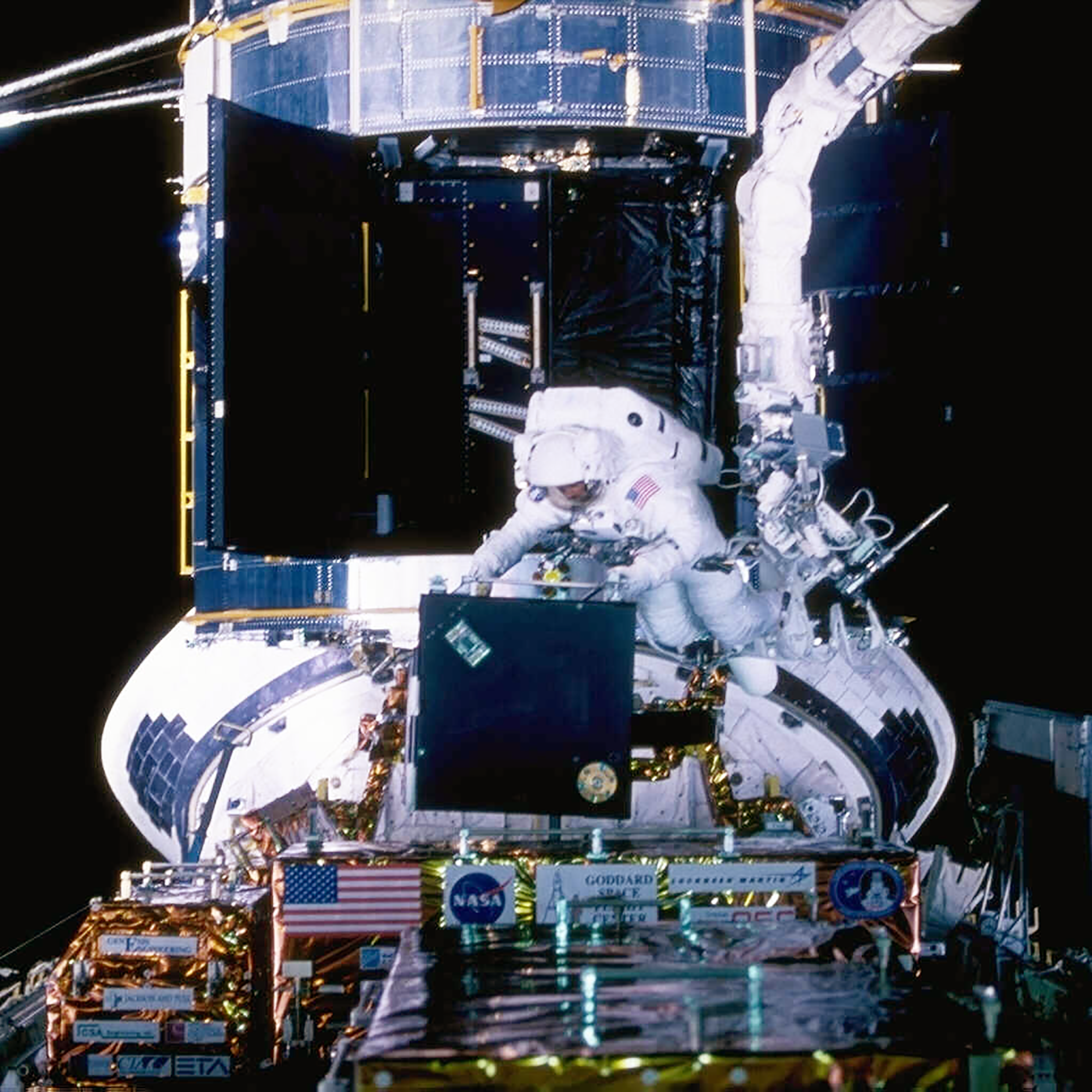
STIS is an imaging spectrograph. It can produce the spectrum of large objects, like galaxies, covering many points across the image simultaneously. The instrument is sensitive to a wide range of wavelengths of light, spanning from ultraviolet through optical to near-infrared light.
STIS's two-dimensional detectors gather 30-times-more spectral data and 500-times-more spatial data than Hubble’s previous spectrographs, which were capable of only looking at one place at a time. The instrument can also act like a coronograph, by blocking the light from bright objects so that it can investigate fainter objects. Using STIS like a coronograph helps astronomers detect the signs of exoplanets orbiting extrasolar stars.
STIS stopped functioning in August 2004 due to a power supply failure. Servicing Mission 4 astronauts repaired it in 2009.
STIS Facts
Instrument type | Camera and Spectrograph |
Weight | 318 kg |
Dimensions | 2.2 x 0.9 x 0.9 m |
Field of view | MAMA - 25 x 25 arcseconds CCD - 50 x 50 arcseconds |
Wavelength range | 115 to 1000 nm |
The Near Infrared Camera and Multi-Object Spectrometer (NICMOS) can study the dusty centers of galaxies and the formation of stars and planets. NICMOS consists of three cameras, which offer both infrared imaging and spectroscopic observations of astronomical targets.
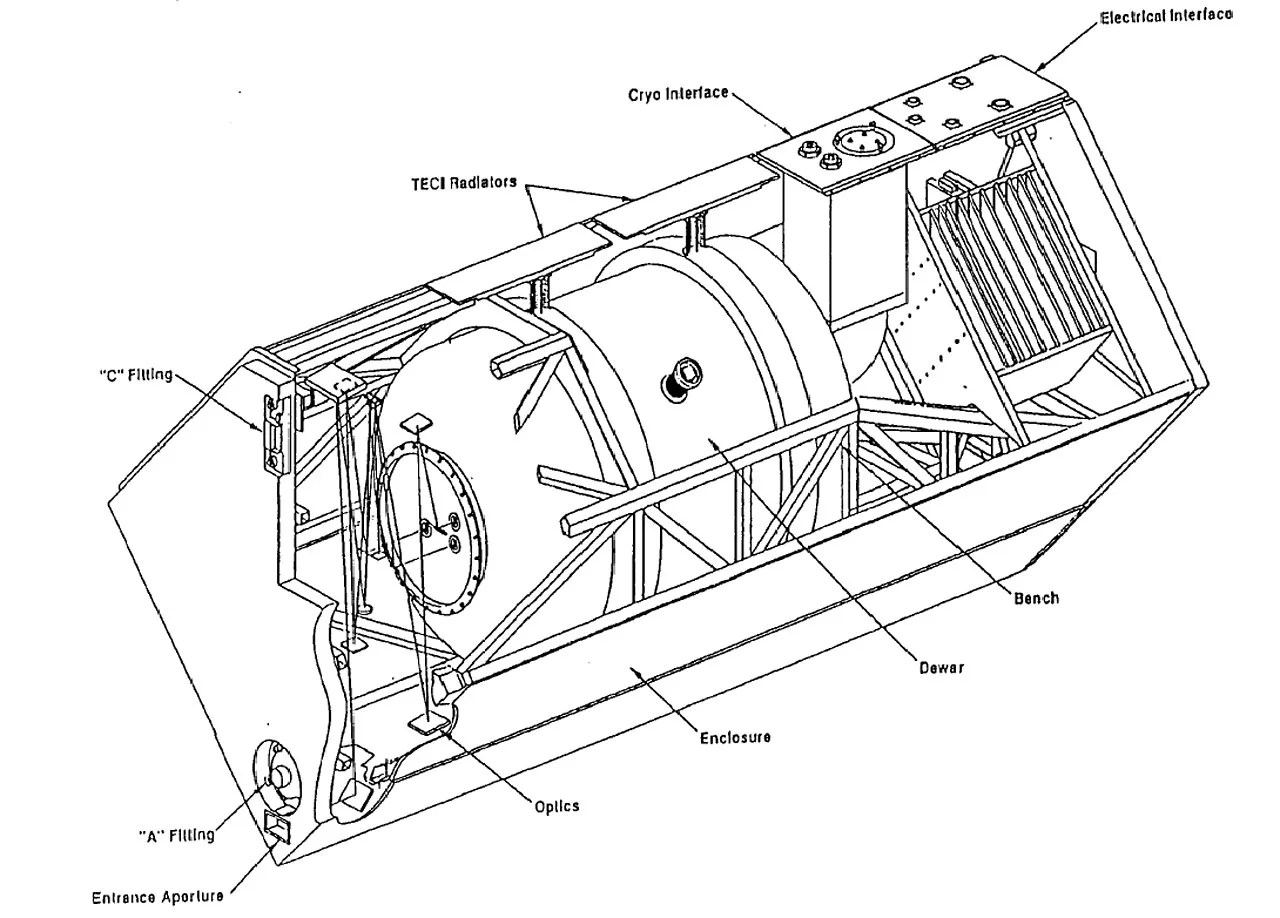
NICMOS gave astronomers their first clear view of the universe at near-infrared wavelengths between 0.8 and 2.5 micrometers (800 to 2500 nanometres) - longer wavelengths than the human eye can see. Its near infrared detectors also perform more efficiently than previous infrared detectors, providing us with views of objects too distant for research by previous Hubble optical and ultraviolet instruments. The expansion of the universe shifts the light from very distant objects toward longer red and infrared wavelengths. NICMOS’s ability to detect these longer, red wavelengths allows us to see older, more distant objects.
Longer, infrared light also penetrates dust clouds more than visible light does, allowing us to see inside the gas clouds, called nebulae, where stars form.
NICMOS was operational from 1997 to 1999, when its cooling supply ran out. In March 2002, Servicing Mission 3B astronauts revived NICMOS by installing an electric cooler. In 2009, Servicing Mission 4 astronauts installed Hubble’s Wide Field Camera 3 (WFC3), which superseded the infrared capabilities of NICMOS.
NICMOS is currently not in operation.
NICMOS Facts
Instrument type | Camera and Spectrograph |
Weight | 370 kg |
Dimensions | 2.2 m x 0.89 m x 0.89 m |
Field of view | Low resolution 51.5 x 51.5 arcseconds Medium resolution 17.5 x 17.5 arcsec High resolution 11.0 x 11.0 arcsec |
Wavelength range | 800 to 2500 nm |
- Refurbished Fine Guidance Sensor (FGS)
Hubble uses this optical sensor to provide pointing information for the spacecraft and as a scientific instrument for astrometric science. The modification to this FGS spare added the capability for ground-controlled alignment corrections. - The addition of an Optical Control Electronics Enhancement Kit (OCE-EK)
The OCE-EK provided the electronic pathway for commanding the alignment mechanisms. - The Solid State Recorder (SSR)
This recorder replaced one of Hubble's three Engineering Science Tape Recorders (ESTR). The SSR provides much more flexibility than an ESTR, which is a reel-to-reel recorder and can store ten times more data. One of the other ESTRs was also replaced, but with a spare ESTR unit. During SM3A mission the reel-to-reel units were replaced with solid state recorders. - Reaction Wheel Assemblies (RWA)
One of Hubble's four RWA's was replaced by a refurbished spare. The RWA is part of Hubble's Pointing Control System. Spin momentum in the wheels moves the telescope to a target and maintains it in a stable position.
- Data Interface Units (DIU)
Four Data Interface Units (DIU) on Hubble provide command and data interfaces between the spacecraft's data management system and the other Hubble subsystems. SM2 astronauts replaced DIU-2 with a modified and upgraded spare unit refurbished to correct for failures that occurred in the original unit. - The Solar Array Drive Electronics (SADE)
This controls the positioning of the solar arrays. Hubble has two SADEs. Astronauts on the first servicing mission replaced one of them. The unit that returned to Earth from orbit was refurbished, correcting problems that resulted in transistor failures. It subsequently replaced the second unit, SADE-2. The European Space Agency, NASA's partner in the Hubble program, provided the SADEs.
The crew took more than 150 other crew aids and tools on this mission. They range from a simple bag for carrying some of the smaller tools to sophisticated, battery-operated power tools.
A seven-member crew took part in this mission. Four astronauts conducted the planned spacewalks: Mark Lee, Gregory Harbaugh, Steven Smith and Joseph Tanner were part of the extravehicular activity crew. Kenneth Bowersox was the commander, Scott Horowitz was the pilot, and Steven Hawley was the Remote Manipulator System Operator.
Meet the Hubble SM2 Astronauts
STS-82 Mission Facts
STS-82 demonstrated anew the capability of the space shuttle to service orbiting spacecraft as well as the benefits of human spaceflight. A six-member crew completed servicing and upgrading of the Hubble Space Telescope (HST) during four planned extravehicular activities (EVAs) and then performed a fifth unscheduled space walk to repair insulation on the telescope.
Explore STS-82 Details